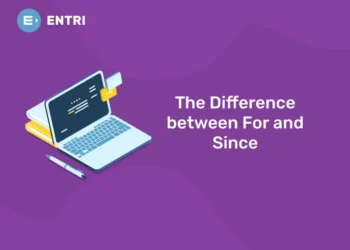Table of Contents
What was the 2008 Financial Crisis
2007–08 Financial Crisis, also known as the Subprime Mortgage Crisis, was a severe contraction of liquidity in global financial markets that started in the United States as a result of the collapse of the US housing market. It threatened to destroy the international financial system, caused the failure (or near-failure) of several major investment and commercial banks, mortgage lenders, insurance companies and savings and loan associations and precipitated the Great Recession (2007–09), the worst economic downturn since the Great Depression (1929 – 1939).
Master stock trading with us. Enroll now for a free demo!
Causes of the crisis
1: What is a stock?
To understand how we got here, let’s break it down into bite-sized pieces. These are especially relevant for stock market enthusiasts because many of the same structural risks are present in markets today.
Housing Bubble & Subprime Lending
- US housing prices rose rapidly in the early 2000s due to low interest rates and easy credit.
- Many mortgages were given to “subprime” borrowers (i.e., borrowers with weaker credit) with relaxed underwriting standards, no documents verified, and no income checked.
- These loans were packaged into complex financial products (like mortgage-backed securities, MBS) and sold to investors around the world. When borrowers started to default, these securities lost value.
Excessive Leverage & Risk‑Taking
- Financial institutions borrowed heavily (leveraged) to invest in high‑yielding assets such as MBS. The more leverage, the more risk if asset values fall.
- The “shadow banking system” (non‑traditional banks and unregulated lenders) grew and took on large risks without the traditional safeguards.
Lax Regulation & Poor Risk Management
- Regulatory oversight was weak in key areas: lenders were allowed to issue riskier loans, credit‑rating agencies mis‑priced risk,and securitisation structures masked underlying risk.
- Banks and financial firms failed to manage risk properly, and many underestimated how bad things could get if the housing market turned.
Global Imbalances & Easy Credit
- The global savings‑investment flows were large: foreign funds flowed into U.S. markets, driving interest rates down and pushing more credit into the system.
- Central banks kept interest rates very low for a long time (especially in early 2000s), boosting borrowing and asset‑price inflation.
Failure of Confidence & Banking Crisis
- When housing prices began to drop, defaults increased, banks’ balance‑sheets got hit, and institutions like Lehman Brothers collapsed (September 2008) which triggered panic in markets.
- Credit markets froze: banks were unwilling to lend to each other, liquidity dried up, and the whole financial system teetered.
Major Banks and Firms Affected
| Company | What Happened |
|---|---|
| Lehman Brothers | Collapsed, filed for bankruptcy |
| Bear Stearns | Sold at a throwaway price |
| AIG (Insurance Giant) | Required a massive government bailout |
| Merrill Lynch | Taken over by Bank of America |
| Fannie Mae & Freddie Mac | Taken over by the US Government |
This was not just a banking failure; it was a system failure.
The Crisis and Its Lasting Impact
The effects of the crisis were brutal and far-reaching, and it took years for them to fully sink in. For ordinary people and for the guys with the money on the stock market, trying to wrap your head around these effects is a big part of understanding what risk really looks like and how markets react in a crisis.
Economic Consequences
- The recession was a real monster: In the US, it was the worst downturn since World War II – GDP plummeted, and unemployment doubled – people lost their jobs in droves.
- Long-term economic damage: What we found out is that even years after it was all over, economic growth was still pretty sluggish, the labour force was shrinking, and investment was a lot weaker than it used to be.
- Global ripple effects: Because the financial markets are all connected, the crisis quickly spread from the US to Europe and other parts of the world: trade, finance, and just plain old confidence took a hit.
Financial Markets and Banks
- Stock markets got absolutely trashed: investors took some huge losses, and household wealth plummeted by trillions.
- Banking sector on the ropes: Loads of banks needed bailing out, and a bunch were even nationalised; getting credit became really tough.
- Overhaul of the regulatory system: After the fact, we saw some major reforms – like the Dodd-Frank Act in the US – aimed at reducing the risk of another disaster like this.
For Investors and Markets
- Sharp market corrections: Any portfolios that were heavily invested in equities or high-risk assets got absolutely creamed.
- Shift in risk perception: a lot of investors started wondering if they were taking on too much risk, how diversified their portfolios were, and whether they should be using more or less leverage.
- How to make the most of a bad situation: Some investors who were prepared managed to use the down market to pick up good companies at lower prices.
- Human behaviour: fear, deleveraging, and people running for safe haven assets (like cash or government bonds) became the dominant themes.
For Everyday Households
- Loss of wealth: house prices plummeted, and loads of people ended up owing more on their mortgages than their house was worth.
- Job losses: millions of people lost their jobs, and a lot of them struggled for years to get back on their feet.
- Reduced consumer spending: people became a lot more cautious and uncertain about the future, which just put the brakes on the economy even more.
Why Taking a Stock Market Course Makes Sense
Given all this complexity, how do you as an investor build resilience and preparedness? That’s where structured learning helps.
For example, the stock market course offered by Entri can be a smart move. Here’s how it aligns:
- It helps you understand market dynamics, not just company fundamentals: macro factors, risk management, behavioural aspects.
- It trains you to read financial statements, analyse companies, identify red flags (for instance, excessive debt or weak governance).
- You’ll get exposure to market strategies, portfolio construction and risk mitigation — the kind of tools that matter when crises come.
- By building your knowledge, you’ll be less likely to panic when markets crash and more likely to act rationally and strategically.
If you are in Kerala (or anywhere in India) and want to move from guesswork to smarter decisions, enrolling in a structured program like this can pay off, especially when global events impact local portfolios.
Reviewed & Monitored by SEBI Registered RA Stock Market Training
Trusted, practical strategies to help you grow with confidence. Enroll now and start investing the right way.
Know moreKey Takeaways
- The 2008 crisis was caused by the bursting of the housing and credit bubble, excessive leverage, weak regulation, and global capital imbalances.
- Its impact was far-reaching: economic recession, stock market crash, job losses, and weak growth for years.
- For investors: know your risk, diversify, understand macro factors, and use down markets as an opportunity when prepared.
- For Indian/global investors alike: global events affect local markets, don’t ignore them.
- Structured learning (like a stock market course) helps you navigate volatility rather than react emotionally.
Learn Stock Marketing with a Share Trading Expert! Explore Here!
Conclusion
The 2008 Financial Crisis was a wake-up call for banks, households, regulators, and investors. It showed how housing, credit, global capital flows, and market sentiment are interconnected. For you as an investor, the crisis proved that markets can swing hard, and when they do, the ones who are prepared tend to come out on top.
You can’t predict exactly when the next big crash will be, but you can build a mindset and toolkit that softens the blow and helps you spot opportunities when others panic.
If you haven’t yet, consider upskilling your investing knowledge, for example, through the stock market course at Entri, and make sure you’re not just following stocks but also understanding the bigger picture.
Reviewed & Monitored by SEBI Registered RA Stock Market Training
Trusted, practical strategies to help you grow with confidence. Enroll now and start investing the right way.
Know moreFrequently Asked Questions
What was the 2008 financial crisis?
The 2008 financial crisis was a global economic downturn triggered by the collapse of the U.S. housing market and excessive risk-taking by banks. It led to major bank failures, stock market crashes, and a worldwide recession.
What caused the 2008 financial crisis?
It was primarily caused by subprime mortgage lending, securitisation of bad loans, excessive leverage, poor regulation, and inflated housing prices. When borrowers defaulted, financial institutions suffered massive losses.
What is a subprime mortgage?
A subprime mortgage is a loan given to borrowers with poor credit histories. These loans carried high risk and high interest rates, which contributed heavily to defaults during the crisis.
How did Lehman Brothers’ collapse affect the crisis?
Lehman Brothers’ bankruptcy in September 2008 was the tipping point. It triggered panic in financial markets, froze credit systems, and marked the start of the global recession phase of the crisis.
How did the 2008 crisis affect India?
India’s banks were less exposed to toxic U.S. assets, but the economy still felt the impact through declining exports, reduced foreign investment, job losses, and stock market volatility.
What lessons can investors learn from the 2008 financial crisis?
The crisis teaches investors to diversify wisely, understand leverage, avoid herd behaviour, and focus on long-term fundamentals rather than short-term speculation.













